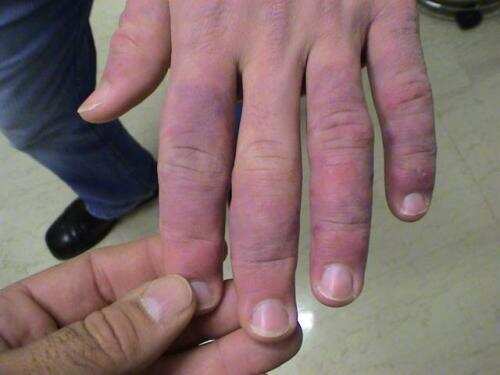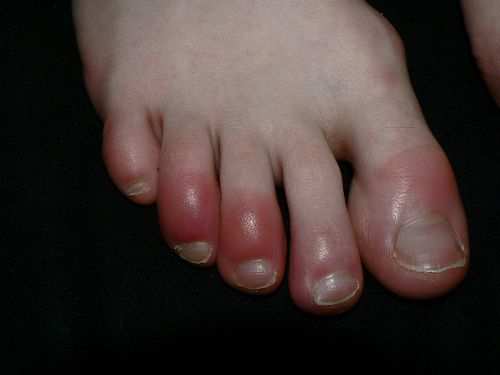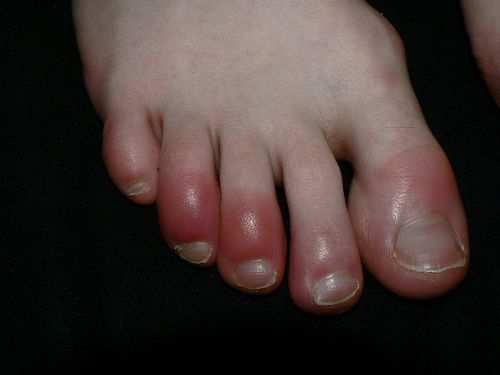Troubled with swollen fingers and toes in winters?
Chilblain-swollen and painful fingers and toes in winters.

Swollen and painful fingers and toes…too much of itching…these are the conditions I face during winters. Getting through the daily chores becomes a troublesome task when faced with this issue. I came across a few more people who complained of the same. After randomly consulting a dermatologist, I came to know that this condition is known as Chilblain. Sharing a few things about this painful phase Chilblain (copied this from Wikipedia to make the readers understand this condition well).
Chilblains — also known as pernio, chill burns and perniosis — is a medical condition that occurs when a predisposed individual is exposed to cold and humidity, causing tissue damage. It is often confused with frostbite and trench foot. Damage to capillary beds in the skin causes redness, itching, inflammation, and sometimes blisters. Chilblains can be reduced by keeping the feet and hands warm in cold weather, and avoiding extreme temperature changes. Chilblains can be idiopathic (spontaneous and unrelated to another disease), but may also be a manifestation of another serious medical condition that must be investigated. A history of chilblains suggests a connective tissue disease (such as lupus). In infants, chilblains together with severe neurologic disease and unexplained fevers occurs in Aicardi–Goutières syndrome, a rare inherited condition.


Signs and symptoms :
The areas most affected are the toes, fingers, earlobes, nose.
- Blisteringof affected area
- Burning and itchingsensation in extremities
- Dermatitisin extremities
- Digitalulceration (severe cases only)
- Erythema(blanchable redness of the skin)
- Pain in affected area
- Skin discoloration, red to dark blue
Chilblains usually heal within 7–14 days.
Prevention:
Exposure
- Avoid rapid changes in temperature (including from cold to hot).
- Wear warm shoes, socks and gloves.
- Wear a hat and a scarf to protect the ears and the nose.
- Avoid tight fitting socks/shoes.
- Recommend soaking in warm water with Epsom salts for 15–20 minutes, 3–4 times a day. Avoid very hot water.
Other
Healthy diet, low in inflammatory foods
- Exercise at least four times a week to improve circulation
Consult a dermatologist for medication.
To join us on Facebook Click Here and Subscribe to UdaipurTimes Broadcast channels on GoogleNews | Telegram | Signal


